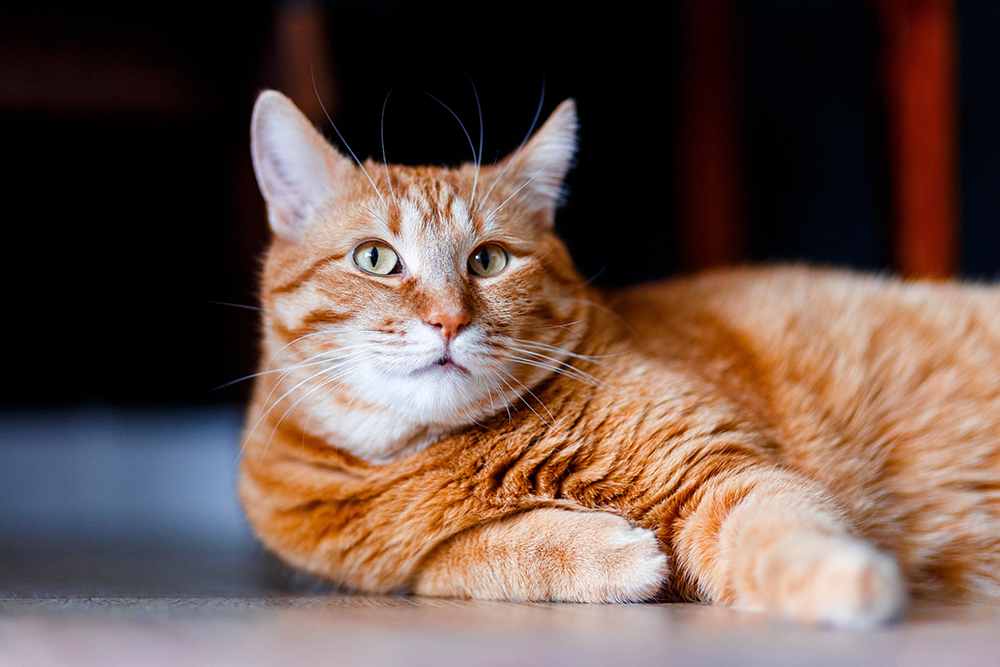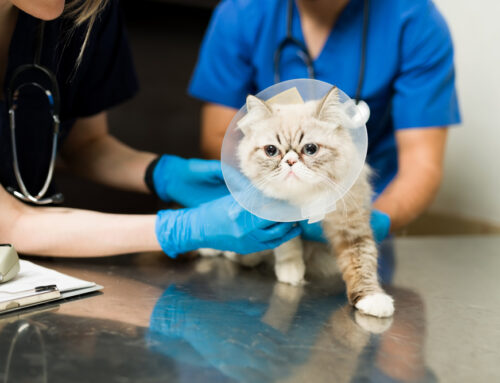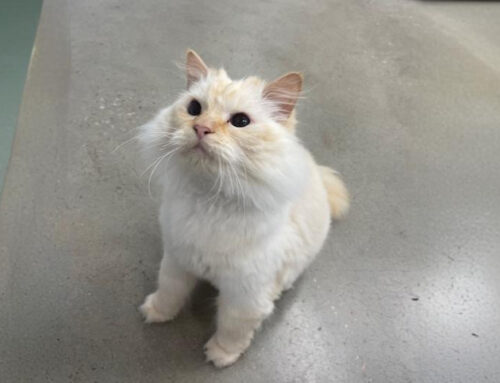Understanding Seizures in Cats: Causes, Symptoms, and How to Help
Witnessing a seizure in a cat can be alarming. A previously calm cat may suddenly collapse, twitch, or lose consciousness, leaving their owner unsure of what just happened- or what to do next. While seizures in cats are less common than in dogs, they are a serious neurological event that requires careful evaluation.
Stack Veterinary Hospital in Syracuse, New York is committed to supporting cat owners through the complex process of understanding and managing seizures, as well as through our certified cat-friendly practices. This guide is designed to help cat owners recognize seizure activity, understand possible causes, and make informed choices about next steps. Whether a seizure is an isolated event or part of a larger medical issue, knowing what to expect can make a critical difference in your cat’s care and long-term wellbeing.
What Is a Seizure in Cats?
A seizure, also known as a convulsion or fit, is caused by abnormal electrical activity in the brain. This disruption can temporarily affect how a cat moves, behaves, or responds to its surroundings. Seizures may be subtle- like a brief twitch- or severe, involving full-body convulsions and loss of consciousness.
Veterinarians categorize seizures by type and frequency:
- Focal (partial) seizures: Affect only part of the brain, often causing localized symptoms like facial twitching or limb spasms.
- Generalized (grand mal) seizures: Involve both sides of the brain and typically cause widespread symptoms, such as collapsing and paddling movements.
- Cluster seizures: Two or more seizures within 24 hours.
- Status epilepticus: A seizure lasting more than 5 minutes or back-to-back seizures without recovery in between. This is a medical emergency.
In many cases, the cause of a seizure is not immediately obvious, and further diagnostic testing is needed to understand what is happening inside the brain and body.
What Causes Seizures in Cats?
There is no single cause of feline seizures. They can result from various health issues ranging from metabolic imbalances to brain disease. Some of the most common causes include:
1. Exposure to Toxins
Cats are particularly sensitive to many common household products. Ingesting insecticides, rodenticides, essential oils, or certain human medications can trigger seizures. The ASPCA’s list of common toxin-related causes is a helpful resource for identifying potential hazards.
2. Underlying Medical Conditions
Diseases affecting major organs- such as the liver or kidneys- can alter brain chemistry and lead to seizures. Hypoglycemia, high blood pressure, or electrolyte imbalances may also contribute.
3. Infectious or Inflammatory Disorders
Conditions such as feline infectious peritonitis (FIP), toxoplasmosis, or meningitis can inflame brain tissue and cause seizure activity.
4. Epilepsy
Idiopathic epilepsy is diagnosed when no structural or metabolic cause is found. Though rare in cats, epilepsy is a long-term condition that can often be managed with medication. Learn more from the ASPCA’s cat epilepsy guide.
5. Brain Tumors or Trauma
Senior cats are more prone to developing brain tumors, which may press against brain tissue and cause seizures. Head trauma- such as from a fall or accident- can also lead to post-injury seizure events. NC State’s guide to brain tumors in animals provides additional detail.
6. Feline Audiogenic Reflex Seizures (FARS)
Some cats- especially older breeds like Birmans- develop seizures in response to high-pitched sounds like clicking or crinkling foil. International Cat Care’s resource on FARS offers further insight into this unusual condition.
What Does a Seizure Look Like in a Cat?
Recognizing a seizure can be challenging, especially when the symptoms are subtle. Below is a comparison of mild versus severe seizure signs:
| Mild Seizure Symptoms | Severe Seizure Symptoms |
| Facial twitching or blinking | Full-body convulsions or rigidity |
| Staring into space | Loss of consciousness |
| Sudden vocalization | Paddling of limbs |
| Involuntary urination | Drooling or foaming at the mouth |
| Disorientation after event | Temporary blindness or confusion |
Cats often go through three stages: pre-ictal (before the seizure), ictal (the seizure itself), and post-ictal (after the seizure). During recovery, they may appear dazed, restless, or uncoordinated. Hill’s Pet guide to seizures in cats is a helpful reference for identifying these phases.
What to Do If a Cat Has a Seizure
When a seizure occurs, remaining calm and focused is essential. The following steps can help protect your cat while ensuring accurate reporting to your veterinarian:
- Move any objects or furniture that could injure the cat.
- Avoid touching or restraining the cat during the seizure.
- Do not put your hands near the mouth or try to medicate during the event.
- Time the seizure if possible.
- Keep the room quiet and dim afterward to allow recovery.
If a seizure lasts longer than three minutes or recurs multiple times in one day, seek emergency care. These emergency signs can help determine if urgent intervention is needed.
How Are Seizures Diagnosed?
At Stack Veterinary Hospital, a comprehensive diagnostic process helps uncover the root cause of seizures. We may recommend a neurology consult or more advanced diagnostics if we are unable to provide them in our own hospital.
- Physical exam: Assesses for trauma, neurologic deficits, or systemic illness.
- Blood and urine testing: Screens for metabolic or infectious causes.
- Advanced imaging: MRI or CT scans may be recommended if a brain lesion or tumor is suspected.
- Cerebrospinal fluid (CSF) analysis: In cases where inflammation or infection is likely.
Stack Veterinary Hospital’s AAHA accreditation ensures high standards in diagnostic accuracy and patient safety.
Treatment and Management of Cat Seizures
Seizure treatment depends on the cause and the cat’s overall condition. Common strategies include:
- Anticonvulsant medications: Such as phenobarbital or levetiracetam for long-term seizure control.
- Treating underlying disease: For example, supporting kidney function or addressing liver shunts.
- Lifestyle and environmental changes: Limiting auditory triggers in FARS or minimizing household stress.
- Monitoring: Keeping a seizure log, regular blood testing, and dose adjustments as needed.
For cats with diagnosed epilepsy, consistent follow-up visits and careful medication management are essential.
What Happens If Seizures Are Left Untreated?
Even occasional seizures should not be ignored. Left unmanaged, seizures can:
- Increase in frequency and severity.
- Lead to permanent brain damage.
- Result in injury during an episode.
- Indicate a serious, progressive disease that needs immediate attention.
A proactive approach improves quality of life, reduces risks, and offers peace of mind for cat owners navigating this condition.
Tips for Living With a Cat Who Has Seizures
Daily routines and household adjustments can support a more stable environment for cats with seizures:
- Administer medication on a strict schedule.
- Record seizure episodes to track patterns.
- Keep the home quiet and clutter-free.
- Avoid exposure to known toxins.
- Use soft bedding and block access to high surfaces.
Consider ordering prescription diets through Hills to Home to ensure nutritional support, especially for cats with liver or kidney issues that may be contributing to seizures.
FAQs
Can seizures be cured in cats?
Some causes, like toxin exposure or infections, are treatable. Idiopathic epilepsy usually requires lifelong management.
Is it safe to leave a cat with seizures alone?
If the cat is stable and episodes are well-controlled, short periods alone may be fine. After a recent or severe seizure, supervision is recommended.
How urgent is a seizure that lasts over three minutes?
Very urgent. Seek emergency care immediately to avoid complications from prolonged seizure activity.

Take the Next Step in Protecting Your Cat’s Health
Seizures are serious- but with timely care, many cats go on to live full, comfortable lives. If your cat has experienced a seizure or shown any concerning symptoms, early evaluation is key. The team at Stack Veterinary Hospital is here to partner with you to uncover the cause, develop a plan, and support your cat every step of the way.
Have questions or need an appointment? Schedule a visit today or contact us directly to speak with our veterinary care team.







Leave A Comment